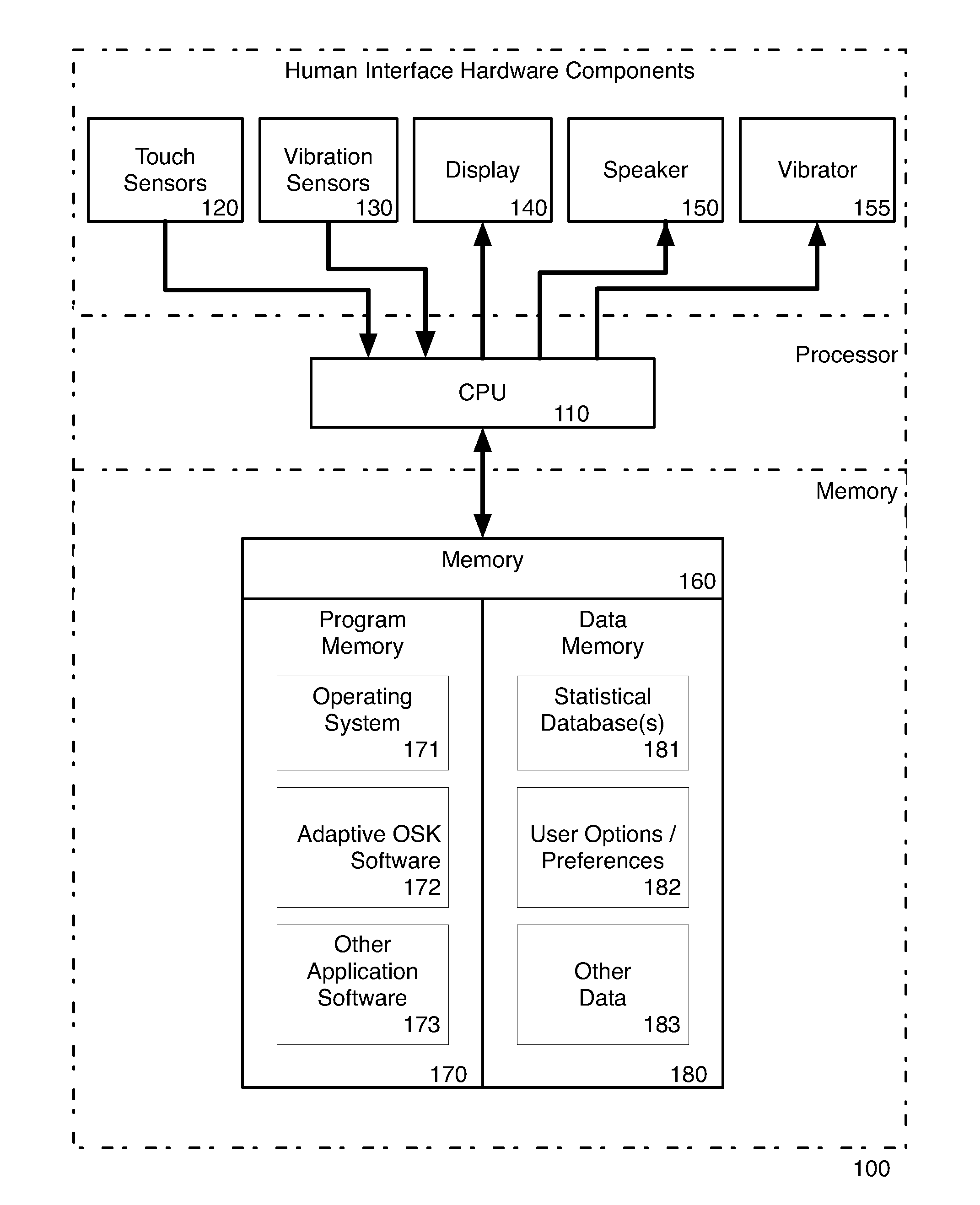Dynamically located onscreen keyboard
a keyboard and dynamic positioning technology, applied in instruments, cathode-ray tube indicators, computing, etc., can solve the problems of destroying the purpose of the device, affecting the use of the device, and being roughly twice the size it would otherwise need
- Summary
- Abstract
- Description
- Claims
- Application Information
AI Technical Summary
Benefits of technology
Problems solved by technology
Method used
Image
Examples
Embodiment Construction
[0045]FIG. 1 shows a block diagram of an exemplary device 100 for providing an adaptive onscreen keyboard user interface for alphanumeric input. The device 100 includes one or more touch sensors 120 that provide input to a CPU (processor) 110. The touch sensors 120 notify the processor 110 of contact events when a surface is touched. In one embodiment, the touch sensor(s) 120, or the processor 110, include a hardware controller that interprets raw signals produced by the touch sensor(s) 120 and communicates the information to the processor 110, using a known communication protocol via an available data port. The device 100 includes one or more vibration sensors 130 that communicate signals to the processor 110 when the surface is tapped, in a manner similar to that of the touch sensor(s) 120. The processor 110 generates a keyboard image that is presented on a display 140 (touch surface) based on the signals received from the sensors 120, 130. A speaker 150 is also coupled to the pro...
PUM
 Login to View More
Login to View More Abstract
Description
Claims
Application Information
 Login to View More
Login to View More - R&D
- Intellectual Property
- Life Sciences
- Materials
- Tech Scout
- Unparalleled Data Quality
- Higher Quality Content
- 60% Fewer Hallucinations
Browse by: Latest US Patents, China's latest patents, Technical Efficacy Thesaurus, Application Domain, Technology Topic, Popular Technical Reports.
© 2025 PatSnap. All rights reserved.Legal|Privacy policy|Modern Slavery Act Transparency Statement|Sitemap|About US| Contact US: help@patsnap.com



